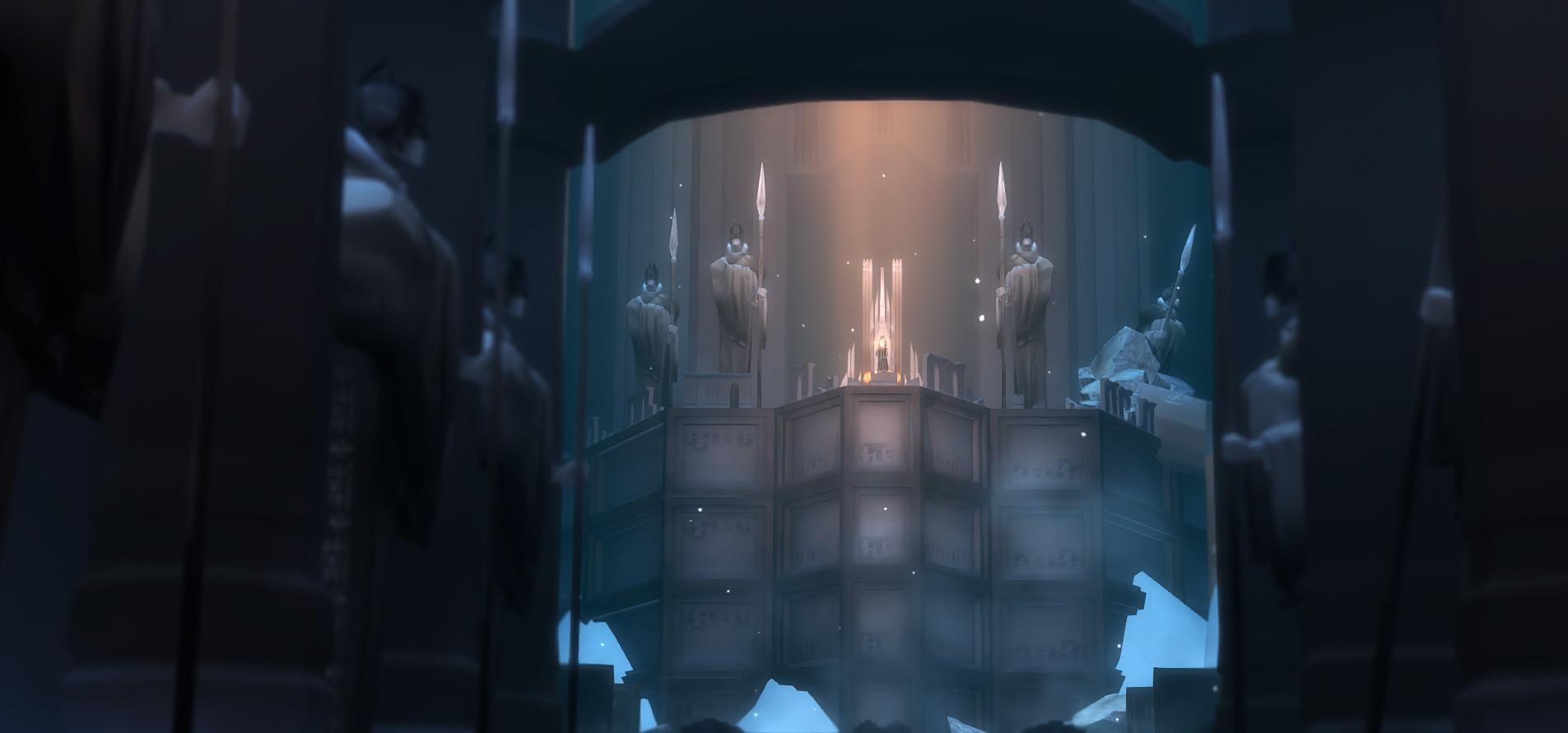For this week’s critical play, I played “In Requiem”, an online walking simulator created by Alberto Carrillo and Anthony Najjar Simon available online at https://amzans.itch.io/in-requiem. The game seems to be tailored to gamers who prefer solo play, ages 10 and up.
The game takes place in a landscape of snowy ruins that the player navigates through a first person perspective. The detailed visual design of the landscape paired with the sounds of footsteps on snow and your own heavy breathing in a first person perspective create an immersive experience in the eerily beautiful atmosphere that builds a sensory fun that I found satisfying.

The flow of the gameplay is largely directed by the player themselves, with an element of time pressure. Using their keyboard and mouse to move around the landscape, the player can choose the paths they take through the ruins to find the other statues. This autonomy of choice effectively creates a fun of exploration.
Finally, the mechanic of the player slowly freezing over time and needing to find the next statue in a certain amount of time creates a sense of urgency and an element of difficult for the player that, in turn, creates the fun of challenge. While the game starts with a low sense of challenge, I feel like starting slow and building up is a good decision to allow the player to ramp up their skills and maximize this type of fun.
As I was playing, I had trouble figuring out how to maneuver landscapes more complex than simple hallways. As a result, I ended up trying to go off of a cliff and getting stuck against an invisible wall for a bit before I managed to turn myself around and try to go somewhere else. The mishap, however, cost me a significant amount of time, resulting in me freezing before I could find the next statue. Thus, the learning curve of getting accustomed to maneuvering was riddled with some fails for me.
One aspect I would change would be to incorporate fully keyboard versions for head maneuvering. Because I didn’t have a game controller or mouse to move my head, I would have to take my fingers off of the arrow keys to move my head on the trackpad, resulting in some clunky maneuvering that increased the difficulty of the game significantly. Thus, if the game had keys, like “AWSD” used for moving the head, I would have found it slightly easier to play on a laptop.
Overall, I enjoyed this walking simulator and the immersive experience it created.




